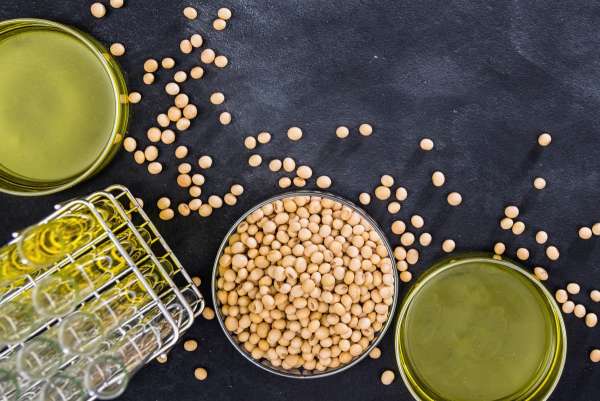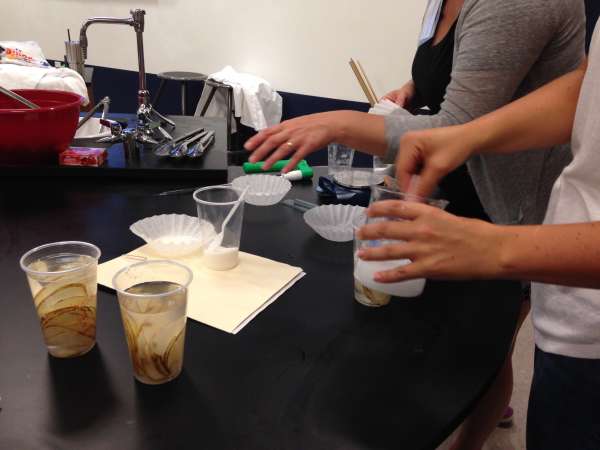High-oleic oil: What’s all the fuss?
Lessons
# Foundations of Molecular Molecules: Properties, Nomenclature, VSEPR Theory and Shapes
Students will learn about the nature of covalent bonding, the fundamental bonding type of all biological structures and how to name molecules and acids.
Files
# Analyzing Formulas and Predicting Shapes
View the set of four video lessons on VSEPR that are presented in the context of how high-oleic soybean oil is a chemical modification that “adds value” to the oil by improving its properties. To understand why, the student learns about how to predict molecular shapes using VSEPR and how those shapes affect the properties of substances such as soybean oil. In this lesson, students will apply VSPER theory, to predict the shapes of molecules. They will evaluate their prediction by constructing 3D models of the molecules and consider how structure affects the polarity of the molecule and connect that polarity to its chemical and physical properties.
Files
# Case Study: How does the structure of a molecule (oleic acid) affect its physical and chemical properties?
View the eLearning course on high oleic oils and answer the pre/post questions, then complete the note sheet. Investigate three studies published online on oleic oils, evaluate the validity of the source and study, and summarize the findings, using the format given. Design and conduct an experiment to test the validity of the claims and write a lab report following the format. (Another mini lesson on hydrogenation may be found here.)
Files
Teacher background
Vegetable oils are lipids, more commonly known as fats. Other examples of common lipids include butter, cholesterol and other steroids, waxes, phospholipids, and fat-soluble vitamins. The common characteristic of all of these compounds is that they are essentially insoluble in water yet soluble in one or more organic solvents. The chains of fatty acids that make up oils affect the behavior of the oil when it is used.
DuPont and Monsanto have developed soybeans that produce high-oleic oil (oils that are higher in monounsaturated fat than regular soybean oil). This oil provides a longer shelf life for foods that have been processed, and allows for better stability in high temperature cooking situations. They have used a process called gene silencing. This process was used to suppress expression of an enzyme in the seed to limit the amount of linoleic and linolenic acid development, that increases the content of oleic acid. By using this biotech process, a very stable trait was produced that results in more than 75 percent oleic acid, despite the varying environments in which soybeans may be grown. Watch this video about a farmer who grows high-oleic beans.
Next gen science standards
Science and engineering practices
- Asking questions (for science) and defining problems (for engineering)
- Analyzing and interpreting data
- Obtaining, evaluating, and communicating information
Crosscutting concepts
- Cause and effect
- Structure and function
- Stability and change
Disciplinary core ideas/content
- LS1A Structure and Function
- PS1A Structure of matter
- PS1B Chemical reactions
- ETS2 Links among Engineering, technology, science and society
- ETS2B Influence of engineering, technology and science on society and the natural world







Share this